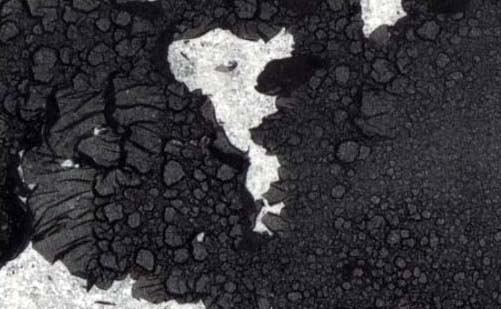
Symptoms: During development, the hardened gum layer disengages from the substrate, first blistering, then coming loose. Sometimes it stays in sheets for a while in the water before breaking into pieces, (looking something like a Polaroid emulsion transfer) sometimes it comes off the surface in chunks (or flakes, hence its name).

Cause: There are two main possible causes for this effect, in my experience: (1) the substrate or the sizing are too slick and/or hard for the gum to hang onto. This effect is often seen when printing on glass or metal. (2) the coating has been applied too thickly, or a mix with high pigment concentration is so heavy and stiff it can't be brushed out thinly, as in the example above.
Solution: The solution for printing on hard surfaces without losing the gum layer in development is giving the gum a better hold on its substrate. Silane is often recommended as a good sub for gum on glass, and I know several people who have used it very successfully, although it hasn't worked well for me. I find that a subbing material that contains some texture, like acrylic medium with a little sand mixed in gives the gum some tooth to hang onto, although it does slightly fog the transparency of the glass.
If the problem is a too heavy or too hard sizing on paper, the solution is to use less gelatin or less hardener.
For a very heavy pigment concentration as above, the best solution is to expose the heck out of it, to make sure you're exposing clear through the thick coating so that the bottom of the layer is well adhered to the paper.
Copyright Katharine Thayer, all rights reserved